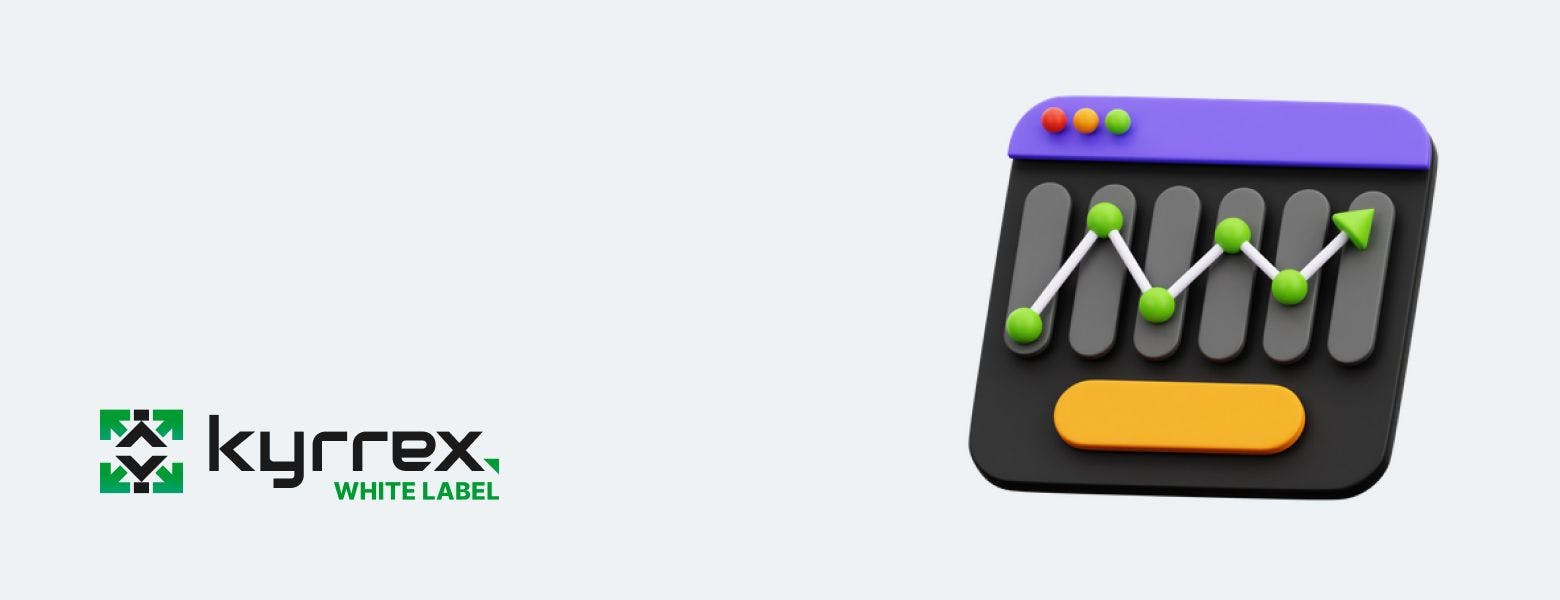
Getting Licenses for Crypto Exchanges in 2023

Navigating the world of cryptocurrency exchanges can be a complex and challenging endeavor. With the rise of digital assets, ensuring compliance with the ever-evolving regulatory landscape has become crucial for the success and longevity of a crypto exchange. But how can one stay ahead of the curve and navigate the intricacies of obtaining the right licenses for crypto exchanges? Worry not, as this blog post will provide you with a comprehensive guide to help you understand the nuances of cryptocurrency exchange licenses, jurisdictions, and other essential regulatory considerations.
In the following sections, we will delve into the different types of licenses for crypto exchanges, the significance of choosing the right jurisdiction, the steps to obtain a crypto license, the regulations governing Virtual Asset Service Providers (VASPs) and Money Service Businesses (MSBs), and the impact of global regulations such as the upcoming Markets in Crypto-Assets (MiCA) regulation. Buckle up and let’s begin our journey!
Short Summary
- Understanding cryptocurrency exchange licenses is key for setting up a compliant and successful exchange.
- Establishing an crypto exchange in Estonia, Lithuania, or Switzerland can provide various advantages due to their favorable regulations.
- Obtaining a crypto license requires registration of legal entity, meeting KYC/AML regulations and adhering to international standards such as the Markets in Crypto-Assets (MiCA) regulation.
Understanding Cryptocurrency Exchange Licenses
Cryptocurrency exchanges must have a cryptocurrency license to legally operate. This authorization is granted by the government or financial regulator of the jurisdiction in which the exchange is based. Grasping the varieties of crypto licenses is essential for establishing a compliant and prosperous exchange. Obtaining a crypto exchange license offers a range of advantages, such as the avoidance of potential legal issues. In many jurisdictions, the types of financial licenses that can be applied for are not specifically designed to regulate the cryptocurrency market. Rather, they are general financial services licenses, where cryptocurrency exchange license activities may be included, such as licenses for brokers and financial advisors.
Now that we’ve established the significance of understanding cryptocurrency exchange licenses, it’s crucial to explore the different types of exchanges and their licensing requirements. The following sections will shed light on centralized and decentralized exchanges, and fiat vs. crypto-to-crypto exchanges.
Centralized vs. Decentralized Exchanges
The cryptocurrency market comprises two types of exchanges: centralized and decentralized. Centralized exchanges are platforms that facilitate the buying and selling of cryptocurrencies through an intermediary, while decentralized exchanges allow for direct peer-to-peer transactions without intermediaries. Centralized exchanges typically require licensing for payment services, while decentralized exchanges may or may not require licensing, depending on the applicable jurisdiction.
The licensing process for decentralized exchanges can vary depending on the applicable jurisdiction and the nature of cryptocurrency transactions. This distinction between centralized and decentralized exchanges plays a significant role in the licensing requirements for each type of exchange. Centralized exchanges necessitate strict adherence to licensing regulations to prevent potential legal issues and ensure compliance with regulatory bodies.
Fiat vs. Crypto-to-Crypto Exchanges
Another aspect to consider when understanding licensing requirements is the difference between fiat and crypto-to-crypto exchanges. Fiat exchanges, which facilitate transactions between fiat currency (such as USD or EUR) and cryptocurrencies, possess more rigorous crypto regulation and licensing requirements in comparison to crypto-to-crypto exchanges, which only deal with cryptocurrency transactions. Exchanges like Kyrrex, Kraken, and Coinbase offer fiat transactions and must adhere to regulations and monitor suspicious transactions.
After exploring the different types of exchanges and their respective licensing requirements, it’s now essential to discuss the importance of selecting the right jurisdiction for your crypto exchange.
Choosing the Right Jurisdiction for Your Crypto Exchange
When selecting a jurisdiction for a crypto exchange, factors such as taxes, regulations, and ease of doing business should be taken into consideration. In the European Union (EU), it is essential to take into account the regulatory specifics, conditions, and benefits of obtaining a crypto license in EU countries, as well as precisely defining the nature of the project and the services provided. Acquiring the European Crypto License permits businesses to operate legally within the EU, ensuring transparency and cultivating trust among customers, partners, and governmental authorities.
Jurisdictions can be broadly classified into two categories: favorable and challenging. Let’s explore these categories and their implications for your crypto exchange.
Favorable Jurisdictions
Estonia, Lithuania, and Switzerland are all conducive to the establishment of a cryptocurrency exchange, offering crypto-friendly regulations and tax environments. Estonia and Lithuania are widely regarded as crypto-friendly nations, with well-defined and comprehensive regulatory frameworks for cryptocurrency and blockchain-based businesses. Switzerland is recognized as a highly crypto-friendly nation, with a transparent and comprehensive regulatory framework for cryptocurrency and blockchain companies.
Establishing a crypto exchange in a beneficial offshore jurisdiction can provide various advantages, such as simpler setup, reduced overall taxes, clearer and more advantageous regulation, and more. Navigating these favorable jurisdictions can significantly impact the success and compliance of your crypto exchange.
Challenging Jurisdictions
On the other hand, some jurisdictions pose a challenge when establishing a crypto exchange. The United States is a particularly difficult jurisdiction when establishing a crypto exchange, due to higher taxes, tighter regulations, and potential obstacles from governing authorities such as the SEC. Other challenging jurisdictions include under-regulated countries, countries with stringent regulatory requirements, and locations where the notion of borders and jurisdictions is being contested.
Understanding the complexities of these challenging jurisdictions is essential for ensuring compliance and avoiding potential legal and financial pitfalls when operating a crypto exchange.
Obtaining a Crypto License: Key Steps and Requirements

The process of obtaining a license, specifically an Estonian crypto license, involves several key steps and requirements, including registering a legal entity, meeting KYC/AML requirements, and complying with local regulations. To register a legal entity for a crypto license, one must select a jurisdiction, register a legal entity, collect a package of documents, appoint a compliance officer and a responsible representative, and pay a state fee. The requirements may include authorized capital, legal form of business, reputation of owners, legal address, bank account, and adherence to AML/KYC regulations.
Let’s delve deeper into the essential steps of obtaining a crypto license, focusing on legal entity registration and KYC/AML compliance.
1- Legal Entity Registration
Legal entity registration is a necessity for obtaining a crypto license in most jurisdictions. The steps for legal entity registration for a crypto exchange involve incorporating a company and selecting a jurisdiction, procuring appropriate legal counsel, securing funding, acquiring a digital signature certificate (DSC), completing the registration application, and adhering to KYC requirements.
The initial step for legal entity registration for a crypto exchange is the incorporation of a company and selection of a jurisdiction. Subsequent steps include securing appropriate legal counsel and acquiring funding, obtaining a digital signature certificate (DSC), and completing the registration application while fulfilling Know Your Customer (KYC) requirements.
2- KYC and AML Compliance
KYC and AML compliance is pivotal for sustaining a crypto license and running a compliant exchange. Anti-Money Laundering (AML) requirements are measures and procedures aimed at identifying, preventing, and reporting money laundering and terrorist financing activities, ensuring the exchange is compliant with relevant laws and regulations, and safeguarding the exchange from potential financial crimes.
Failing to abide by AML regulations may result in the imposition of more severe penalties and sanctions. Ensuring compliance with KYC/AML regulations is an essential aspect of obtaining and maintaining a crypto license, protecting both the exchange and its users from potential legal and financial risks.
Virtual Asset Service Providers and Money Service Business Regulations
Virtual Asset Service Providers (VASPs) and Money Service Businesses (MSBs) are subject to specific regulatory requirements in various jurisdictions. VASPs are entities or individuals that offer services related to digital assets, such as exchanging, storing, selling, or transferring virtual assets on behalf of another person. Understanding the regulatory requirements for VASPs and MSBs is essential for operating a compliant crypto exchange.
Let’s explore the specific requirements and regulations for both VASPs and MSBs.
1- VASP Requirements
VASP requirements include registration, reporting, and compliance with international standards. These requirements have a direct impact on the operation and compliance of crypto exchanges, ensuring that exchanges adhere to the standards established by the Financial Action Task Force (FATF) and other regulatory bodies.
By understanding and complying with VASP requirements, crypto exchanges can avoid potential legal and financial risks, ensuring a smooth and compliant operation in the ever-evolving world of digital assets.
2- MSB Requirements
Money Service Businesses (MSBs) are subject to varying regulatory requirements depending on the jurisdiction. These requirements typically involve registration, reporting, and compliance with anti-money laundering regulations, ensuring that MSBs adhere to the regulations imposed by the Financial Crimes Enforcement Network (FinCEN) and other governing authorities.
By comprehending and adhering to MSB requirements, crypto exchanges can further safeguard their operations from potential legal and financial pitfalls, contributing to the overall compliance and stability of the exchange.
Navigating International Crypto Regulations
Understanding international crypto regulations is critical for ensuring compliance when operating a crypto business, such as an exchange, across multiple jurisdictions. The international regulations concerning cryptocurrency vary by country, with some countries having legalized cryptocurrency while others have partially or fully restricted it. Therefore, it is essential for businesses and individuals involved in cryptocurrency to comprehend and adhere to the regulations in their respective jurisdictions.
In this section, we will discuss the upcoming Markets in Crypto-Assets (MiCA) regulation and other international regulatory considerations that can impact the operation of a crypto exchange.
1- MiCA and Its Impact on Crypto Licensing
The upcoming MiCA regulation will standardize crypto licensing requirements across the EU, having an impact on exchanges operating within the region. The European Commission has developed MiCA, a regulatory framework, to address crypto assets and related services which have not been regulated by existing EU regulations. It is designed to regulate the markets for these assets in a safe and secure manner. The adoption of MiCA will directly affect companies wishing to operate in the EU, regardless of their customer base being outside the EU, requiring them to adhere to MiCA regulations and any additional requirements set by national regulatory frameworks.
With the projected implementation of MiCA between mid-2024 and early 2025, it is crucial for crypto exchanges operating in the EU to prepare for the harmonization of crypto licensing requirements and the potential impact on their operations.
2- Other International Regulatory Considerations
Apart from the MiCA regulation, other international regulatory considerations include understanding local laws and tax implications, as well as potential future changes in the regulatory landscape. Regulatory co-operation between different countries ensures that regulations are unified and effective, with organizations such as the World Trade Organization (WTO) establishing agreements and frameworks to govern international trade.
By staying abreast of international regulatory developments and understanding the potential impact on their operations, crypto exchanges can navigate the complexities of the global regulatory landscape and ensure long-term compliance and success.
Summary
In conclusion, understanding the nuances of cryptocurrency exchange licenses, jurisdictions, and international regulations is crucial for operating a compliant and successful exchange. By delving into the different types of licenses, choosing the right jurisdiction, and navigating the complexities of VASP and MSB regulations, crypto exchanges can ensure compliance and avoid potential legal and financial pitfalls.
As the world of digital assets continues to evolve, staying ahead of the curve by understanding and adhering to the ever-changing regulatory landscape is essential for the longevity and prosperity of a crypto exchange. With the knowledge gained from this comprehensive guide, you are now well-equipped to embark on the exciting journey of establishing and operating a compliant crypto exchange in the dynamic world of cryptocurrencies.
Frequently Asked Questions
How do I get a crypto exchange license?
To get a cryptocurrency exchange license, you must meet financial stability, cybersecurity and compliance requirements as outlined by the relevant laws in your jurisdiction.
These requirements vary from jurisdiction to jurisdiction, but typically include having a certain amount of capital, having a secure system for storing customer funds, and having a compliance program in place to ensure that the exchange is following all applicable laws.
What is the crypto exchange license in the UK?
The crypto exchange license in the UK is a registration with the FCA under the AML/CTF regime. This registration acts as a ‘license’, allowing for the provision of certain crypto services from within the UK.
What is a crypto license?
A crypto license is an important legal authorization that provides permission for a crypto business to conduct a cryptocurrency exchange and comply with applicable laws and regulations. It can also help to establish customer trust and expand services.
What are the key differences between centralized and decentralized exchanges?
Centralized exchanges involve a third-party intermediary to process transactions, while decentralized exchanges allow users to interact directly with one another without any intermediaries.
What factors should be considered when choosing a jurisdiction for a crypto exchange?
When selecting a jurisdiction for a crypto exchange, factors such as taxes, regulations, and ease of doing business must be taken into account.
These factors can have a significant impact on the success of the exchange, so it is important to choose a jurisdiction that is favorable to the business.
For example, some jurisdictions may have lower taxes or more levies.





